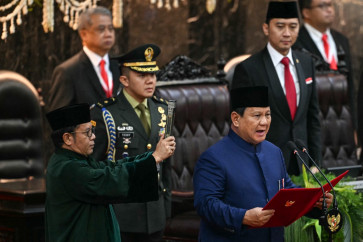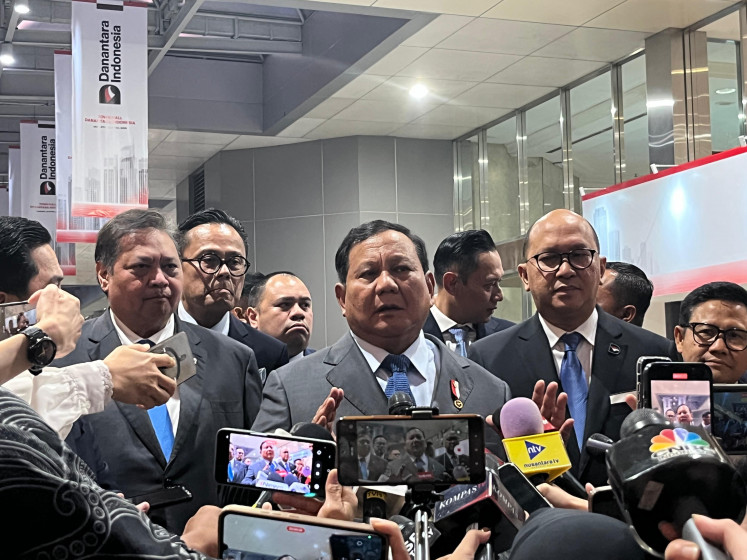Popular Reads
Top Results
Can't find what you're looking for?
View all search resultsPopular Reads
Top Results
Can't find what you're looking for?
View all search resultsReconstruction period extended in damaged West Nusa Tenggara
The government has decided to extend the emergency transition period in the earthquake-hit West Nusa Tenggara (NTB) for four months until Dec
Change text size
Gift Premium Articles
to Anyone
T
he government has decided to extend the emergency transition period in the earthquake-hit West Nusa Tenggara (NTB) for four months until Dec. 25 from the previous deadline of Aug. 25, to finish the restoration of all houses damaged by the disaster.
National Disaster Mitigation Agency (BNPB) head Doni Monardo said at least 222,000 residences had been damaged by a series of strong earthquakes that jolted the island of Lombok, NTB, in August last year.
“More than 170,000 of the buildings had already been repaired by today. We still have about four months to repair the remaining 50,000 units,” he said on Tuesday, adding that some 75,000 of the houses had been severely damaged, forcing the authorities to rebuild them from scratch.
The central government had channeled Rp 5.1 trillion (US$358 million) to restore all of the damaged and destroyed houses. Residents whose homes were severely damaged would get compensation of Rp 50 million each. Meanwhile, those with moderately and lightly damaged houses would receive Rp 25 million and Rp 10 million respectively.
“The residences should be restored using earthquake-resistant housing standards,” Doni added.
The languid pace of the reconstruction process, on the other side, had made more than 240,000 people who lost their dwellings to the earthquake practically homeless, as they have no choice but to stay in temporary shelters indefinitely.
Doni was speaking after attending a national workshop on post-disaster settlement in the province’s capital Mataram, which was jointly held by the International Federation of Red Cross and Red Crescent Societies (IFRC) and the Social Affairs Ministry.
The workshop was expected to produce a new model of settlement suitable to accommodate victims of disasters. “We hope the output can be adapted by other countries in the Asian region,” a coordinator at the IFRC, Ela Serdaloglu, said.
Lombok is located between two “earthquake-generators”, namely the Flores back arc thrust to the north and the boundary of the Sunda and Indo-Australian tectonic plates to the south. The upward movement of the former generator on Aug. 5 last year was believed to cause a magnitude-7 earthquake in the region — resulting in more than 400 people being killed by falling buildings.
The area of the quake epicenter, according to several studies, consisted mostly of volcanic sediment that had been raised up and was weather-beaten. The weathered nature of the sediment could strengthen the effects of a vibration, which makes the area susceptible to earthquakes.
NTB Deputy Governor Sitti Rohmi Djalilah said more than 2,000 tremors hit the province from July to September last year. “At least 573 people died and 4,000 individuals were injured during the calamity. Some 400,000 residents fled their 222,000 damaged houses,” Sitti said. (vny)










